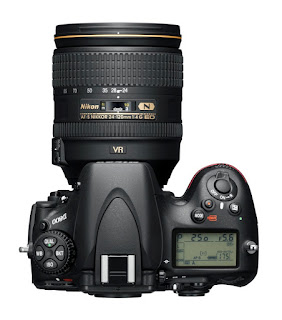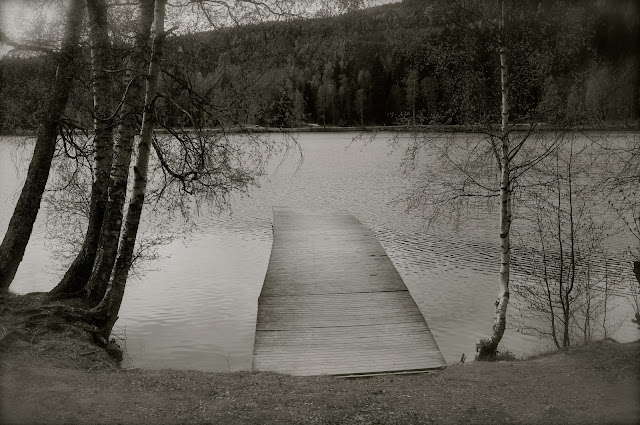The Setup (My Thoughts On The D800)
I can see a pattern emerging this week: it's a warm-up for 4 grueling weeks of hard work, as we near the deployment phase of a project we are doing at work. Another workout session missed! But as long as the weather remains nice and sunny I can walk home from work, and get quite a good exercise from that too.
So today was another excuse for me to visit my favorite camera shop in Oslo and check out the D700 yet again. I had to hold it in my hands once more, play with the settings, attach some lenses and take some quick snaps. Since the D700 and the D800 (which I am saving up for to get) look and weigh the same, I was assuming that learning to handle this camera now would mean that the learning curve to handling the D800, when I acquire it, would not be as steep.
I have to admit it's heavy, but reassuring, something that professionals and enthusiasts would appreciate. I played with the D700 with the 50mm F1.4 lens attached. But lo and behold! They also had the AF-S Nikkor 24-120 F4 VR lens on display! I eagerly attached it to the D700. And immediately I felt that this camera was MINE. It was heavy, but the balance was fantastic. It didn't feel that the lens would tip the camera over. This is a very good setup, one I can actually imagine myself working with. And with the versatility of the VR I know I would also be able to work with this lens in low-light situations!
Which gets me to the point of this post. The D700 still commands a high price tag at NOK 16,000. But it's still an excellent camera. The D800? NOK 23,000. A huge price difference IF you don't give it a second thought. The D800 gives you three times as much resolution while retaining the stellar high ISO performance of the D700, 100 % FOV (against 95), higher shutter rating (200K vs 150K), plus the added benefit of being able to shoot broadcast quality video (I don't know if I will be using this extensively though). Truth be told the D700 is still a very attractive prospect. But the price between the D700 and the D800, specifications-wise, is marginal, so more people will probably hold on to their money and wait until the D800 is in the shelves. Ken Rockwell even advises his readers to avoid buying a new D700. Unless they reduce the price of the D700 drastically (and by drastic I mean half of what the D800 costs), stores will probably never be able to get rid of their remaining stock of D700's. In comparison, the Canon EOS 5D Mark II is now being sold for NOK 12,000, which is 57 percent less than the Mark III's asking price. That is a lot of savings, especially if you don't need the Mark III's more advanced AF and movie mode. The resolution increase of the Mark III compared to its predecessor is minimal, even negligible in my opinion.
But all criticism aside, the D700 is still a superb camera, and those who have it need not invest in a D800 unless the resolution increase is worth it for them.
And we come to the resolution. Thirty six megapixels is really more than what the average enthusiast needs! I'm not even sure if I am going to be shooting at that resolution all the time! And all these megapixels makes the D800 one unforgiving camera, as it will reveal all optical imperfections of a lens, and all the technical deficiencies of a photographer! Nikon has even published a technical guide for the D800, with tips on how to maximize image sharpness by using a tripod, cable release, or simply by being aware of lens diffraction and focusing. Clearly Nikon anticipates that the D800 will be a camera that will separate the men from the boys, so to speak!
So if you are planning to get the D800 like I am, be prepared to step up your game a notch or two! Get the best lenses, be prepared to lug around a tripod if you plan to shoot landscapes (I plan to get this one), and make sure your camera skills are in check. It sounds frightening, but if this is the camera that will make me work even harder to grow as a photographer, it will be worth every penny that I will be paying for it.



Comments
Post a Comment